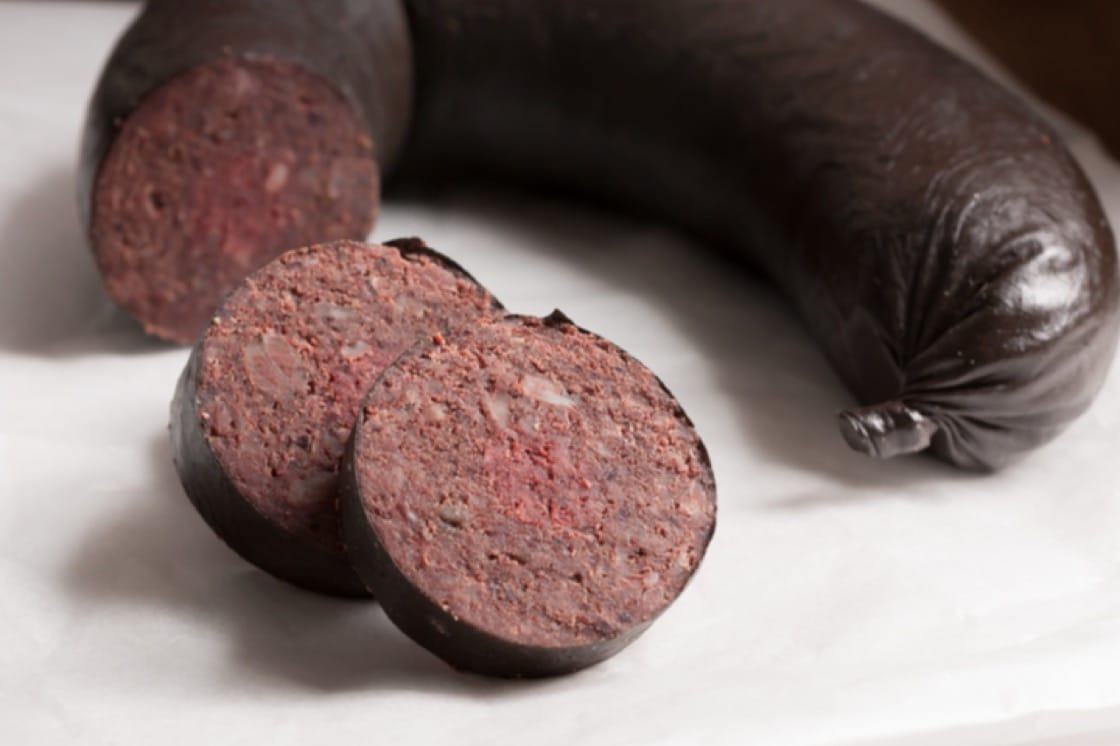
One of the most famous of German sausages, second only to the Frankfurter Würstchen, the bratwurst is typically made from veal, beef or pork. The recipe for the actual sausage vary from region to region and has to date, over 40 varieties.
Cooking method: Listen to them sizzle in a pan or over coals.
Served as: A snack, with a white bread roll and mustard or a pretzel. And as a meal, it’s often served with a side of sauerkraut or potato salad.

Made fresh every day from minced veal and back bacon without the use of preservatives or curing methods, the Bavarian weisswursts are the daytime Cinderellas of the sausages; they have to be eaten before noon. In fact, the Germans have a saying that weisswursts should not be allowed to hear the noon chime of the church bells.
Cooking method: Bathe them in water just shy of boiling so the skins don’t split from the heat.
Served as: A snack after breakfast and before lunch with a pretzel, sweet mustard and a beer.

Literally translating to blood sausages, the German blutwurst is typically made with pork rind and blood cooked down with barley.
Cooking method: Although the blutwurst is already cooked before sale, it is typically served warm.
Served as: A meal. A popular dish is Cologne’s ‘Himmel und Erde’, which serves hot blutwurst alongside sweet apple sauce and mashed potatoes.
If this name doesn’t sound familiar to you, don’t worry. Chances are, you know them by their other monikers: Vienna sausage, wiener or frank. Or quite simply, hot dog. Yes, the ubiquitous New York street food snack is actually German (sorry, Yankees).
Cooking method: They’ve already been lightly smoked and cooked prior to getting packaged so the frankfurters require only heating up.
Served as: A snack, in a bun and topped with mustard and horseradish.

Made with pigs’ or calves’ livers, leberwurst is a spreadable sausage whose recipe differs from region to region. Some of the spices used in the sausage include black pepper, marjoram, thyme, ground mustard seeds and nutmeg. Butchers have however, gotten more adventurous with their sausage blends over the years, adding exotic ingredients such as cowberries and mushrooms to the mix.
Cooking method: None required.
Served as: Spread thickly on bread and served as an open-faced sandwich with some mustard and pickles.
It is one Germany’s oldest known sausages with a reference dating as far back as 1404 and if that’s not good enough for you, the sausage has been given a protected geographical indication (PGI) status under the European law. Only finely minced pork, beef and sometimes veal is used in its production. And at least 51 percent of the ingredients used has to come from the state of Thüringia.
Cooking method: Roasted over charcoal or on a grill for a delicious char.
Served as: A sandwich. On an open roll with some mustard.

The currywurst isn’t so much as a type of sausage than it is a dish; it’s made with bratwurst that’s first boiled then fried, and doused in a sauce of tomatoes and Worcestershire and dusted curry powder. But we felt like it deserved a special mention for the fact that it’s an icon of German popular culture.
Like many fast food dishes, the currywurst has humble beginnings. It started as a cheap street food snack invented by Herta Heuwer in 1949. Today, it has a museum opened in its honour, Deutsches Currywurst Museum, which estimates that 800 million currywursts are eaten every year.


















